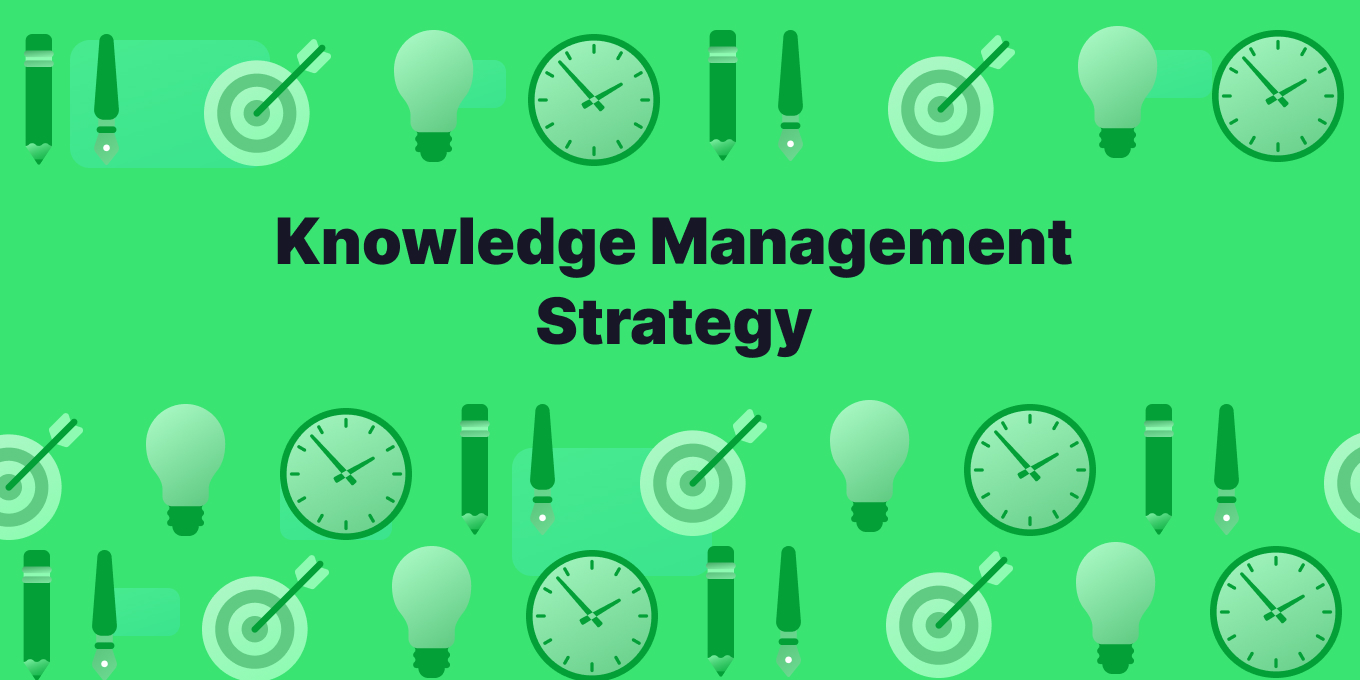Knowledge management is a hugely important task that delves deep into every aspect of an organization, in order to capture the institutional and practical knowledge that gives it an edge over its competitors.
And just like any major project, it requires a sound and effective strategy.
What is a Knowledge Management Strategy?
A knowledge management strategy is the framework by which the knowledge base will be built, from initial concept to company-wide execution. It is the roadmap that outlines the goals and how to achieve them, and which aligns everyone to the task at hand.
The knowledge management (KM) strategy is a critical part of the knowledge management process ; indeed, it is the cornerstone on which effective knowledge management rests.
Without a clear strategy, implementation becomes challenging, and the resulting knowledge base may not be as complete or reach its full potential.
Tools like Tettra make the actual knowledge management implementation easier.
“People are actually excited to write documentation,” says Cal Brunnell, co-founder of Everyday Speech. “I think it makes you feel good when you have a solid answer to a question, and you don’t have to re-answer it every time. People really value that Tettra is the first place they look before they ask a question rather than having to figure it out on their own.”
Before you pick a tool, however, you need a strategy for creating a knowledge base.
A solid KM strategy should be able to:
- Strengthen the business case for knowledge management with the top brass
- Bring internal awareness for KM to the rest of the organization, along with its benefits that everyone can relate to
- Outline the timeline, resources needed, and goal posts to be achieved
- Delegate tasks to department and team leaders, and make them aware of their responsibilities
- Track the progress of the implementation
How to Develop a Knowledge Management Strategy
Step 1: Knowledge Audit
The first step of any KM strategy is to audit the organization’s knowledge. Assess the existing KM capabilities:
- What tools or resources are currently being used that catalogue knowledge, if any
- Check the extent of the knowledge base, and how often it gets updated
- Map informational siloes or knowledge gaps
- Quantify the amount of time wasted searching for answers in existing systems
- Designate a knowledge manager , if there is no formal role
Understand that there are different types of knowledge that must be captured. Some of this is obvious, some of it isn’t.
Organizational knowledge falls into 3 buckets: explicit, tacit, and implicit.
1. Explicit knowledge is the codified information captured in documents, files, books, PDFs, and hard copies.
2. Tacit knowledge are lessons acquired through practice and experience by knowledge workers. While intuitive, it is more challenging to capture and store. An example would be soft skills, which is gained through interaction.
3. Implicit knowledge refers to the organization’s processes, routines and culture. It becomes “embedded” in the work environment through long practice and repetition.
Effective knowledge management will capture all three.
Step 2: Outline the Business Value of Knowledge Management
In order to get the buy-in from management, there must be a value proposition. Some of the benefits of KM include:
- More efficient business processes
- Less downtime and manpower hours wasted
- Better coordination and collaboration among departments and working groups
- Faster learning, training and development
- Codified best practices
- Identification of knowledge gaps and opportunities for improvement
The business value must be balanced against the manpower, time, and resources needed to bring the project to fruition, but in all cases, the benefits of KM far outweigh the initial investment needed.
Step 3: Defining the Strategy
With the audit done and support secured, it’s time to define the strategy.
- Set the goals and timeline
- Identify the resources needed and set the budget
- Appoint a point person or officer-in-charge who will help collect the knowledge in departments and teams
- Set KPIs for measuring progress and success
Step 4: Share Knowledge
What forms does knowledge sharing take on?
Informal discussions: This is the most common form of knowledge sharing, where employees exchange information and ideas through casual conversations, emails, or instant messaging.
Document sharing: Companies can create and share documents such as manuals, reports, and presentations to disseminate information.
Communities of practice: These are groups of people who share a common interest or profession and regularly collaborate to share their expertise and knowledge.
Mentoring: Companies can promote mentoring programs where senior employees mentor junior staff to help them learn new skills and knowledge.
Workshops and training sessions: Companies can provide training sessions or workshops to teach employees new skills, technologies, and best practices.
But like what was mentioned at the beginning, it’s good that all of this is being shared, but where it is stored? That’s where your internal knowledge base comes in and why you need a strategy to capture it.
Best Practices for your KM Strategy
Like other change management processes, there are certain factors that can improve your knowledge management strategy. These include:
- Behavioral motivation
Since knowledge comes from people, the success of the entire endeavor rests on their willingness to participate, contribute, and share. Drum up support by outlining benefits that they can concretely relate to, such as shorter learning periods, smoother coordination and knowledge sharing, and less time and frustration spent hunting for information.
You can also build up enthusiasm by appealing to their ego: how their knowledge is a critical part of the organization’s success, and how the information they hold can help successive generations.
2. Remove information barriers
One of the aims of knowledge management is to smash organizational silos that hinder groups from working efficiently and effectively. Emphasize the importance of coordination and networking to build best practice routines for inter-team collaboration.
3. Pattern analysis
Good KM doesn’t just capture existing knowledge; it identifies trends and patterns that can lead to new knowledge. Evaluate how different groups work together, or how processes and routines affect one another.
4. Properly identified
The knowledge base is only as effective as its usability. To make it easy and convenient to use, the collected knowledge should:
- Be properly categorized
- Be tagged by department, function, or work routine
- Maintain a consistent style across content
5. Tech augmentation
The incessant march of technology can do wonders for your knowledge base. Explore how new tech can transform your knowledge management system and make it easier and more accessible for your audience.
This can include newer software or content management systems, intuitive Wiki-style tools, and even AI learning or voice recognition.
6. Easy Distribution of knowledge
Knowledge management doesn’t stop at the execution level. As knowledge continues to evolve, so too should KM stay on top. Whenever a knowledge material gets added to or updated, the relevant parties should be informed.
Utilize channels like email, newsletters or even social networks to keep users informed and up-to-date on their respective fields.
Distributing knowledge seems silly when you have small team, but becomes increasingly important.
“With a lot of startups, the onboarding piece is really difficult,” explains Cal from Everyday Speech. “At the beginning, everybody owns a piece of the company, and information lives in everyone’s collective minds. Since implementing Tettra, we’ve gotten really good feedback from recent hires that the onboarding is super helpful and clear.” By centralizing information in Tettra, Everyday Speech helps employees understand the company more easily—from its overarching values to their specific jobs and daily work.
Get more tips about knowledge management from Tettra:
- What is knowledge management? The basics explained
- 8 examples of knowledge management systems
- 5 steps of the knowledge management process
- 11 best knowledge management tools to use right now
Building out your company knowledge? Use Tettra
Tettra is an AI-powered knowledge management system that helps you curate important company information into a knowledge base, use it to answer repetitive questions in Slack and MS Teams and keep it up-to-date, organized, and complete with automation.

Tettra offers a full suite of tools for sharing knowledge. With Tettra, you’ll get:
- Q&A workflow to capture questions
- AI-powered knowledge base for instant answers
- Knowledge management features to keep content up to date.
- Integrations with chat tools to make sure your team actually uses Tettra


